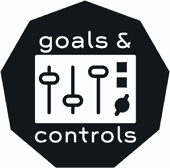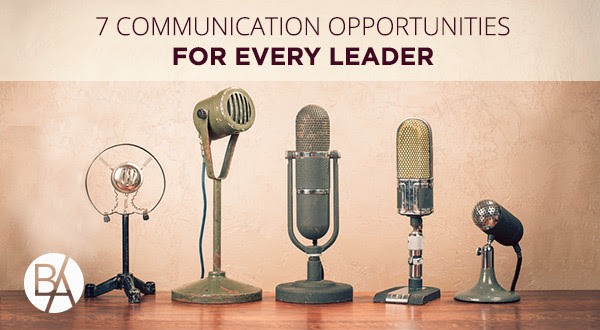Concerning real estate, you have heard the phrase, “It’s all about Location, Location, Location.” Then may I say that in business, “It’s all about Communication, Communication, Communication!”
Successful, values-driven cultures have leaders who consistently offer meaningful communication with a purpose. And they repeatedly communicate internally- with their employees, as well as externally- with customers and suppliers.
You might be thinking, “What do I communicate? – Don’t my employees know everything that they need to know?”
I learned that every employee, at the very least, wants answers to the following four questions:
- Where is the company headed?
- What is my role in this effort?
- How is my performance going to be evaluated?
- How am I doing?
Most leaders know they need to communicate better and more often, but often, they don’t know how to make it happen! Here’s some help…
Effective leaders are continually revisiting two questions:
Goals –
- What is our goal?
Controls –
- Are we making progress?
And the internal communication opportunities in my company were designed to…
- Focus employees on our organization’s most important objectives/strategies and measurable performance goals.
- Increase understanding how each person’s responsibility aligns and fits with objectives/strategies and measurable goals.
- Strengthen accountability by assigning objectives/strategies and measurable goals that were visible organization-wide.
Observation: When you and your people are working together toward the same objectives/strategies, your organization can execute those objectives/strategies faster, with more flexibility and adaptability.
Essentially, your peoples’ alignment to the objectives/strategies strengthens your leadership and creates an agile organization – people become more engaged with their work.
In my company, our leadership team and I had the responsibility to continually coach our people through the communication opportunities on how our progress reports…
- Demonstrated us living out our Values, and
- Tied back to our Purpose, Vision, Super-Objectives, and strategic objectives.
Insight: People want to pursue something bigger than themselves – something with a purpose that rises above a weekly paycheck or bonus incentive.Challenge: It’s up to the leader to cast the vision and purpose of their organization.
Observation: A leader’s vision is cast by what they say. A vision is also reflected in what is not said! In fact, what you don’t say communicates as much as what you do say.
Application: If a leader centers their communication, recognition/rewards and attention around the financial success of the company, the employees will come to understand that the financial “bottom line” is all that matters. Their deep desire to be part of something greater than themselves will result in either their ongoing frustration, or ultimately draw them away from the organization.
Every leader can have a more engaging culture by seizing the following seven internal communication opportunities.
Friday’s Stand-Ups
Every Friday at 8:05 am we would ring the cow bell (my favorite part) to have a quick 5 to 10 minute stand-up fun and information meeting to update people on what was going on in the company, for example:
- Let’s congratulate “John Doe” for record sales last week.
- “John Doe” and his wife had a new baby boy last night.
- “Jane Doe” received a special thank you from customer__________!
- Who can tell us what is Nside/Outside?
- Today’s door prize goes to _________!
- This afternoon we will be ordering snow cones for everyone, so be prepared to select your flavor.
- Bobby will be traveling next week to work with ________ customers in Washington D.C. and Florida.
- Remember Monday we will start our “Move It and Lose It” weight-loss challenge.
MBWA (Management By Walking Around)
MBWA is an unstructured walking/wandering by leadership through the workplace to talk with employees or inquire about the status of ongoing work.
Insight: WBWA is not when a manager invites an employee or calls a meeting with a group of employees into their office – “you come to me” syndrome. MBWA only occurs when the leader gets up from their desk and goes out into their people’s workspace.
Product Line/Functional Meetings
A weekly or bi-weekly one-on-one or team meeting with a supervisor designed to review status updates and progress on tactical projects and measurable goals.
Business Reviews
A monthly, half-day, comprehensive, open forum for the leadership team to give updates by reporting to their peers about their progress on tactical projects and measurable goals.
State of the Company
My moving and storage company held an hour and half, company-wide “State of the Company” meeting three times a year:
- In early January after the first of the new year
- In May before our peak season
- In September after our peak season
Our COO and I would report our company-wide progress on…
- Where have we been?
- Where are we now?
- Where do we want to be?
Executive Team
Key members of our leadership team would usually meet off-site in another city for two half-days at least twice a year:
- In Spring before our peak season
- In August before our peak season ended
The purpose of these meetings was to review our progress and brainstorm on long-term “big picture” planning for the future – strategic direction and growth of our business.
QIC-Days
Our annual, half-day, company-wide QIC-Day was called this because our first one was Operation QIC (pronounced “quick” for Quality is Contagious).
My company usually held QIC-Days in October after our peak season, and the purpose was to emphasize a yearly theme like “Nside/Outside”.
Intentional communication is the only way to ensure alignment between daily work and the overarching Values, Purpose, Vision and Super-Objectives of your organization.
When your team’s daily efforts are aligned with these overarching cornerstones, then you can spend more time defining your strategic objectives and executing on the tactics to achieve them.
How do you communicate with your people: Where is the company headed? What is their role in this effort? Please share your comments <here> and share this blog post with a co-worker and friend.
Updated: 6/30/2016


